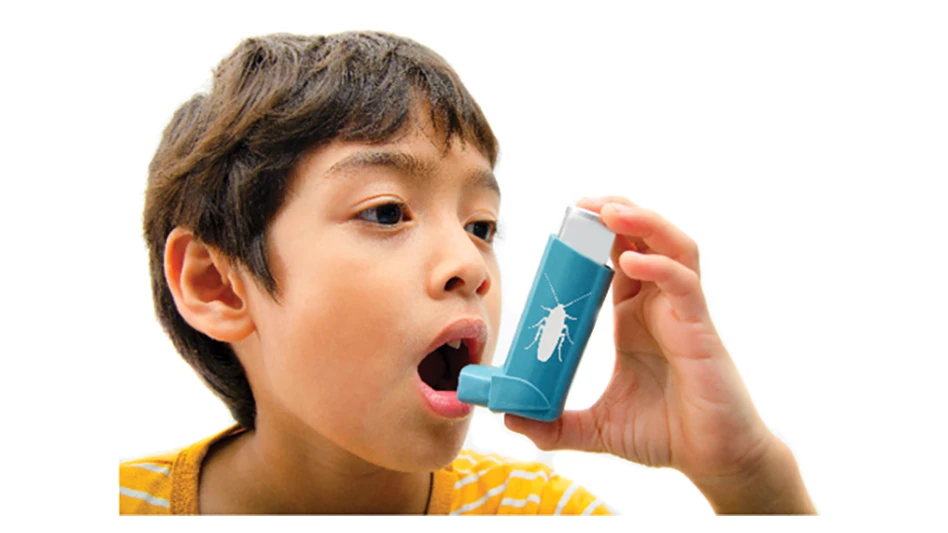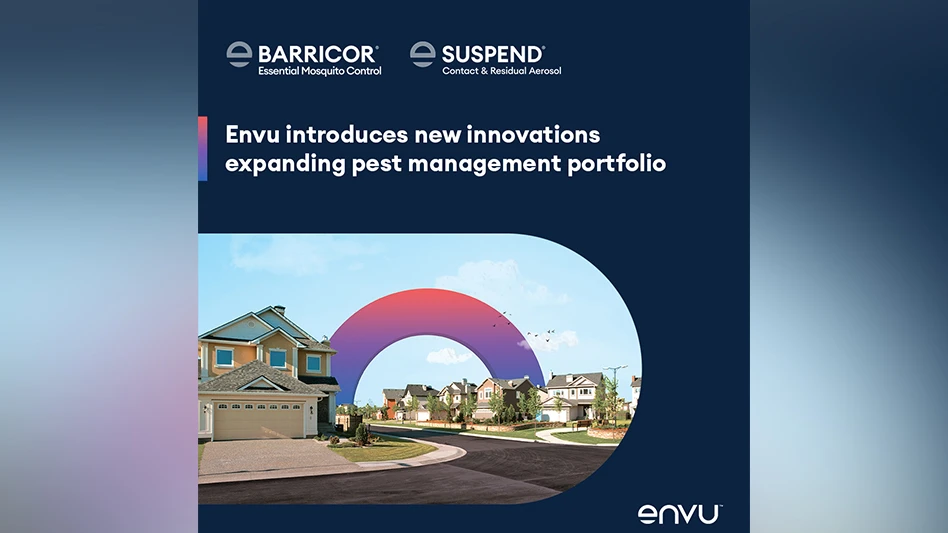Editor’s note: The research reported here was funded by Applied Science Labs. For additional information about the firm, visit www.vaxinatewith88.com.
There are many choices in the market today to battle bed bugs. In addition to applying traditional insecticides, extreme temperature treatments have grown in popularity. In hospitals, outpatient centers, nursing homes, dormitories, schools and hotel rooms where sensitive health and chemical exposure are concerns, temperature treatments are a common choice. They are effective, however, the main drawback is they leave no residual and these types of sites are areas where incoming pressure is a constant and more of an issue than infestations. Another important reason to use a residual product is because experts believe as much as 60 percent of an infestation consists of the bed bug eggs that will hatch later.
Is it possible to develop a nontoxic chemical that is lethal to bed bugs, yet leaves a residual that is harmless to humans and other mammals?
The American Academy of Entomological Sciences (AAES) was approached by a private laboratory to test a product for its effectiveness in killing bed bugs, Cimex lectularius, in a field situation with residual potential. Generally, AAES does not test any product without knowing the active and inert components and the mammalian toxicity.
Dr. Jeffrey Brown signed a confidential disclosure and received the list of ingredients. When Brown saw that the active was an EPA-exempt 25(b) component, “soybean oil,” he contacted the laboratory and explained to management that, in the team’s professional opinion, this “active” was not likely to be effective on insects and was concerned that they would be wasting their money. They insisted and wanted to explain the manufacturing process and what they do with soybean oil to achieve this unique response. Having had the benefit of their explanation and learning of the background for the product’s development, the team agreed to do a small lab test with minimal cost.
The product tested is commercially available from Applied Science at www.vaxinatewith88.com and as Cimi-Shield Knock Out and Cimi-Shield Protect from www.pestbarrier.com and its distributors. It is available in two strengths: VA88 (high concentrate) and Glow Guard (low-concentration residual).
At first Brown did not believe the product would be effective in killing bed bugs. However, once the tests were completed and more was learned about mode of action, the results spoke for themselves. The active is a proprietary protein complex initially engineered from soybean oil involving thousands of proteins and their specific ratios. This active chemical is known as Residulin and is found commercially in VA88, Glow Guard and Cimi-Shield.
In these initial steps, there was proof it killed by direct contact, but the question of residual efficacy remained. The residual efficacy testing project required treating a site with current bed bug activity with a direct spray formulation (prepared in accordance with label directions) and careful periodic monthly evaluations for 12 months after the initial treatment.
Site description. The site was a commercial hospitality facility offering overnight and extended stay, single-room accommodations, meeting facilities and other guest services to the public. It is professionally managed with on-site and regional support supervision. The structure is four stories of single rooms, each about 300 square feet. Each room is carpeted, has one to two queen-sized beds with box springs and mattresses, affixed headboards and a chest of drawers. Bearing walls are placed one on top of another without concrete separation. All but end rooms share at least two common walls, one on each side, ceiling and floor joists, except for bottom and top floors which have but one adjacent room above or below, respectively. End rooms share one common wall. Electrical lines are placed in the wall voids and run from room to room.
Rooms are serviced daily by housekeeping with standard hospitality-style wheeled service carts that are pushed from room to room. Carpets are vacuumed with a common machine and were not shampooed during this test period. Soiled bed clothing, towels and wash clothes are gathered daily from each room, placed in common service carts and moved from room to room until filled. They are then moved to an on-site facility and laundered.
Initial treatment. Packets of super concentrated material in two formulations (knock down and preventive only) were prepared according to label directions in clean 1-gallon hand pump spray canisters. It should also be noted that the sprayer canisters, hoses and nozzles must be completely free of any surfactant (e.g., soap), other chemicals or residues. This product cannot be combined with other substances, like IGRs. Each sprayer was equipped with an adjustable spray nozzle that permitted both stream and fan spray and all filters were removed. Both formulations of the product contain a UV marker for later detection with a UV light.
 In December 2010, 20 rooms (11 infested and 9 uninfested) were selected and treated. The knock-down formulation was applied to infested rooms and the preventive-only version was applied to uninfested rooms sharing a common wall with infested rooms, ceiling or floor joist in accordance with the instructions for use and as provided by label directions.
In December 2010, 20 rooms (11 infested and 9 uninfested) were selected and treated. The knock-down formulation was applied to infested rooms and the preventive-only version was applied to uninfested rooms sharing a common wall with infested rooms, ceiling or floor joist in accordance with the instructions for use and as provided by label directions.
A single pass without overlap, from a hand-held wand of a 1-gallon hand-held spray canister was made over fabrics and textiles at a distance of about 24 to 30 inches at a rate of about 3 to 4 feet per second. This provided for an application rate of about 1 gallon of finished product per 1,200 square feet of surface area and included application to all fabrics and textiles. Treatment included the spraying of all carpeting, upholstered furniture, all sides of box springs, all sides of the mattresses and window coverings, and bed frames, including plastic snaps. Headboard and headboard support was removed and these areas were sprayed with a single pass at a distance of approximately 24 to 30 inches moving at about 3 to 4 feet per second. No furnishings were removed. A single pass of all cracks, crevices, junction points and baseboards where carpeting met walls were treated with a spray at a distance of about 24 inches at a rate of approximately 3 to 4 feet per second.
All treated rooms were fitted with Bug Dome traps and inspected monthly. There was also an inspection with a trained bed bug dog once each year. In the ensuing 12 months, no live bed bugs were found in the treated rooms. In the 11 rooms that were initially treated for active infestations, all showed dead bugs one month after treatment. Only two rooms had an additional occurrence in the 12-month period where dead bed bugs were found. In the nine rooms treated preventively, only three occurrences were observed during the same period as dead bed bugs were found. The last four months of the observation period showed no evidence of bed bugs in any of the treated rooms.
Although the subsequently found dead bed bugs could be attributed to the product’s residual effect, more conclusive data was desired — researchers still wanted to know how effective the residual was. After twelve months, fresh bed bugs were brought in from outside the site. In this project we chose one room randomly that had been previously treated and a room (for our control) that had never been treated. The treated room had no observed odor, stains or damage. It was vacuumed and darkened in order to inspect the residual condition with a
350 nm UV black light (the greater the lumens, the easier to observe the “sparkle” or “glow”). This was possible as the formula contains a UV reflective element so as to allow for confirmation of application on inspection. At 6 to 8 inches, it was apparent through visual inspection where product had been originally applied on textile surfaces.
The bed bugs were placed on the carpeting near the head of the bed under an inverted arena of a new plastic 10-gallon aquarium with the bottom inch of the aquarium treated with petroleum jelly to prevent the bed bugs from escaping.
Hourly checks were made in the evening hours to avoid disturbance by guests or housekeeping and to simulate the nocturnal cycle of the insects. Light was used only at the time of inspections and then with a flashlight. Observations were recorded until all insects were dead or moribund. Instead of introducing CO2 gas from a cylinder, the observer would slowly breathe into the inverted glass arena using a flexible tube for five breathes (about 10 seconds) to induce movement of the bed bugs across the carpeting.
In the treated room, 10 adult and 3 nymphs were placed. The nymphs were all dead by hour 4 and the adults were all dead by hour 13. In the control room, an identical setup with 12 adults was placed and observed at the same time. There were no deaths except for three that were presumably injured in transfer from travel container to observation arena. At the end of the observation (hour 13), the control group was anesthetized with CO2, placed in the upright aquarium, allowed to revive, and sprayed with the “knockdown” formulation. Mortality of all bed bugs was observed within 25 seconds.
This field study clearly indicates that the residual was effective 12 months after the initial application. The project ended January 2012. The “knockdown” formula can be used to obtain control over an infested area. The preventive formulation can be used in areas where no infestation is wanted. It can also be used as an appropriate “top dressing” following an extreme temperature treatment, either heat or freezing (Cryonite) providing residual protection for at least a year afterward, even with regular vacuuming. It is important to note that regular sanitation and maintenance of this site contributed to the success of the treatment.
So how does this work? AAES has been asked several times about the mode of action of the proteins, and this is the staff’s understanding — the protein complexes uncouple electron transfers and increase transmembrane leak of the protons in the membrane of the waxy layer of the insect. This is similar to standard chemical uncoupling described in organic chemistry. In plain English: the waxy layer is breaking down (in some cases rapidly), creating a hole. This is why it is essential that the bed bugs make adequate contact with the chemical via applications to textiles rather than hard surfaces. Because Residulin affects the waxy layer, rather than depending on getting into a receptor site, Brown believes that the insect cannot become resistant to the protein complex active. That’s really big news, and it invites further study into its application to other insect species.
Dr. Jeffrey Brown is director general of The American Academy of Entomological Sciences, Ridgeland, Miss. Learn more at www.entomologyacademy.com. Kate McGovern and Jeff McGovern are pest management consultants. Reach them at jbrown@giemedia.com, kmcgovern@giemedia.com and jmcgovern@giemedia.com.
For tables with data on the monthly/periodic on-site monitoring of Bug Dome traps, annual inspections with trained bed bug dogs, physical inspections and customer complaints, visit www.pctonline.com and click on “online extras.”

Explore the December 2012 Issue
Check out more from this issue and find your next story to read.
Latest from Pest Control Technology
- How to Get Rid of Odorous House Ants
- Massey Services Promotes Herndon to Director of Sales for Multi-Family Division
- NPMA Announces First Recipients of NPMA PRO Certified Credential
- Pestmaster of the Hudson Valley Acquires Catskill Animal Damage Control
- Photo Slideshow: Ant Identification Tips
- Video: Top 10 PCT Photo Contest Finalists
- UF/IFAS Study Reveals Boats as Perfect Vessels for Global Termite Spread
- Pest Control Consultants (Iowa) Earns Pinnacle Performance Award





